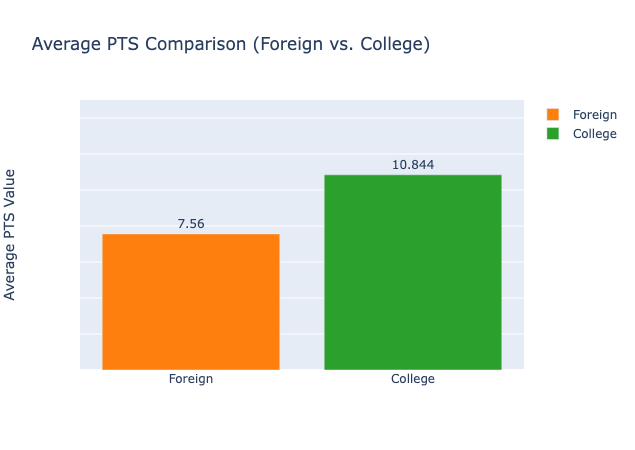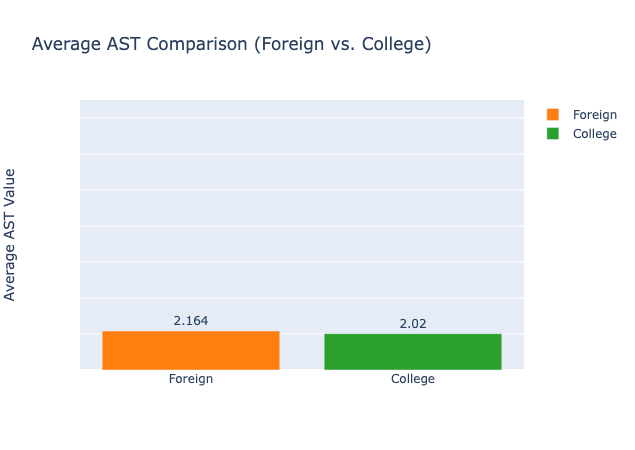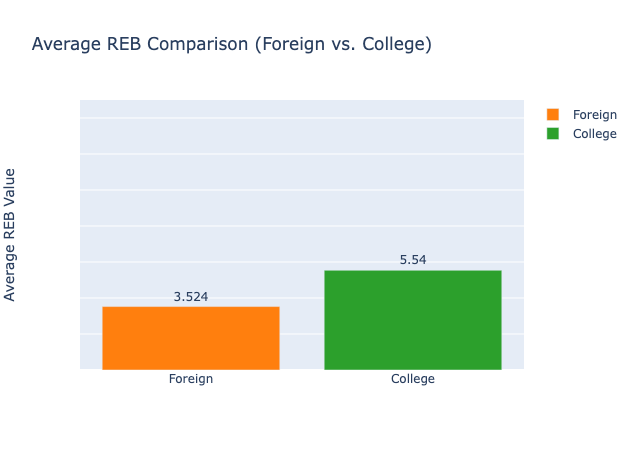By: Cole Hannum

Introduction
The NBA stands as a testament to the global appeal and impact of basketball, adorned with international stars who've etched their names into its history. From the prolific scoring of Dirk Nowitzki to the awareness and ball handling of Steve Nash, the craftiness of Tony Parker, and the unyielding spirit of Manu Ginobili, these legends have woven an intricate story of success. Today, the league shines with the brilliance of current MVP contenders like Giannis Antetokounmpo, Luka Doncic, and Nikola Jokic, each adding a new chapter to the narrative of international excellence.
The NBA's opening night boasted a record-breaking 125 international players from 40 countries, marking a decade of 100+ foreign-born players on rosters. With all 30 teams featuring at least one international player, Canada led the pack with 26 representatives, followed closely by France with 14, including highly anticipated rookie Victor Wembanyama. European talent, as a whole, encompassed 64 players.
Coming from European Leagues, these players often found themselves competing against seasoned veterans early in their careers. Facing opponents notably older exposed them to a level of competition far beyond their years, imprinting upon them a unique form of basketball their forming basketball experience. This unconventional experience has been proposed as a contributing factor to their swift acclimatization upon entering the NBA. Notably, the recent trend of MVPs lacking college basketball backgrounds suggests an alternate path to NBA prominence, one paved outside the realms of U.S. collegiate hoops.
Consider the contrasting styles of Giannis Antetokounmpo and Nikola Jokic. Giannis, famed for his explosive athleticism and relentless drive, stands juxtaposed with Jokic's methodical approach, relying on finesse, basketball intellect, and craft rather than sheer physical dominance. Their diverse approaches to the game not only redefine excellence but also reflect the multifaceted nature of international basketball talent. The exposure to seasoned competition early in their careers might serve as a secret weapon. Learning from seasoned veterans at an age that is essential for development may have gifted these international talents with a deeper reservoir of knowledge, better preparing them for the rigors of NBA competition. This broad exposure, alongside their distinct play styles, accentuates the allure of international players in the NBA, elevating the league's global stature.
However, as new pathways to professional basketball emerge, such as G League Ignite and Overtime Elite, the landscape is set to evolve. Players entering the league may arrive with vastly different experiences, potentially influencing their initial approaches to the game and reshaping the dynamics during their rookie seasons.
This brings us to the question of the matter: Do players whose pre-draft playing experience lies outside of the U.S. college basketball realm exhibit heightened effectiveness in their rookie seasons? What facets of their game are honed by exposure to different rules and playstyles outside the U.S.? Exploring these nuances not only sheds light on their immediate impact but also underscores the diversity and richness these players bring to the NBA.
Terms and Metrics
First we will define the statistics that we will be using to determine the effectiveness of these players in their rookie year.
PER (Player Efficiency Rating):
PER considers both positive outcomes like field goals, free throws, assists, rebounds, blocks, and steals, alongside negative ones such as missed shots, turnovers, and personal fouls, using a point-based system. It's then adjusted per minute and for the team's pace, culminating in a single value that encapsulates a player's statistical contributions for the season.
This is the main statistic we will be using to determine a player’s effectiveness as it is one of the best statistics to see a player’s overall performance in the time that they play
WS (Win Shares):
Win Shares is a statistical measure that endeavors to allocate credit for team achievements to individual players. Computed using player, team, and league-wide statistics, the cumulative win shares of players on a specific team generally align with that team’s total wins for the season.
This will be used to determine how many wins a rookie adds during their first seasons
MP (Minutes Played):
This is the total amount of minutes played during a season.
This will be used in conjunction with the other statistics as a player can only really be valuable if they are on the court enough.
We've carefully examined players for evaluation from the last five drafts, covering the period from the 2018 Draft to the 2023 Draft. These players have met a minimum requirement of 400 minutes played throughout the season, ensuring our assessment includes those who had a meaningful impact while accounting for factors like injuries and lack of rookie participation.
A player who is classified as international last played in a league that was not in the United States before getting drafted. College players were those drafted out of American Colleges. The remaining players either came from G League Ignite, Overtime Elite or were drafted out of high school in special cases, such as Jalen Lecque, who spent five years in high school.
Number of Players Selected
First we will look at just the number of players selected over the past year to get a look at the overall talent pool from every classification:

It's evident that colleges continue to serve as the primary pipeline for NBA talent. Given the expansive prominence of basketball in the United States compared to other nations and the gradual establishment of alternative pathways for U.S.-born players, the majority of NBA players over the past five years and likely in the foreseeable future will have emerged from U.S. college programs.
While college players make up the bulk of NBA rosters due to the abundance of highly regarded collegiate prospects, this doesn't inherently guarantee superior performance. In the forthcoming section, we'll delve into statistical analysis to gauge how these metrics stack up.
However, it's crucial to note that statistics for players pursuing alternative paths outside international leagues and colleges won't be included. With only 15 of these players drafted, their statistics might be influenced by outliers, potentially skewing the overall analysis.
PER
Analyzing PER based on the average of each draft round allows comparison between the top prospects and lower prospects from both international and college backgrounds.

Undoubtedly, the first round typically boasts higher average PER values compared to the second round, as expected. However, it's intriguing to note that, on average, both in the first and second rounds, international players tend to exhibit lower PER values than their college counterparts. This discrepancy is notably more pronounced in the second round, implying a more significant decline among lower-tier international prospects relative to college players.
The PER/MP Scatter Plot provides insights into player efficiency on a per-minute basis and simultaneously illustrates the extent of their court time, offering a comprehensive view of how effectively they contributed within the context of their team.

This scatterplot visualizes the distribution of rookie players based on their Player Efficiency Rating and minutes played. A significant cluster of rookies tends to have a PER range of 5 to 20, while the majority have accumulated under 1500 minutes on the court. Examining the linear regression lines, a notable similarity is observed between them. Interestingly, a trend emerges hinting that foreign players who log more playing time might exhibit a propensity for higher PER values.
Among the outliers in the college player cohort, notable figures include Ben Simmons, recognized for registering the highest playing time among all rookies within our observed period. Another standout is Zion Williamson, whose debut rookie season was limited by injury despite boasting a PER just shy of 25. In the foreign players' cohort, Luka Doncic stands out among the outliers. Doncic's exceptional journey began in professional basketball at the tender age of 16, contributing significantly to his outlier status within this dataset.
WS/MP

The scatter plot comparing win shares and minutes played reveals a noteworthy trend: the initial contribution to winning games is quite similar on average between different player groups, with college players holding a slight advantage. This disparity might stem from the variations in basketball styles between American and European formats, each governed by distinct rules and play dynamics. These differences potentially foster unique skill sets in players, and when adapted to the American basketball landscape, could translate into slightly superior performance. This nuanced adaptation to different play styles likely contributes to the edge observed in the performance of college players compared to their counterparts.
Basic Stats
When examining fundamental offensive statistics, it becomes evident that freshly drafted rookies from college exhibit notably higher point and rebound values compared to their counterparts. This divergence could potentially be attributed to the emphasis American players place on individual play styles, prioritizing shooting and scoring—often seen in the isolation game—over passing. Conversely, European players tend to demonstrate a higher average in assists, reflective of a play style that emphasizes teamwork and collective elements of the game rather than individual scoring prowess. This distinction in approach aligns with cultural nuances; in the United States, players are known for their individual prowess, influencing aspiring young athletes to aim for individual excellence rather than emphasizing team dynamics.
Conclusion
The analysis of rookie NBA players, drawn from both international leagues and U.S. college programs, offers a glimpse into the diverse talent shaping the league. While colleges continue to serve as the primary pipeline for NBA talent, an examination uncovers subtle differences between international and college players. On average, college rookies tend to exhibit slightly higher efficiency ratings compared to their international counterparts, particularly noticeable in later draft rounds. Additionally, fundamental offensive statistics unveil distinct tendencies: American players often prioritize individual scoring, reflected in higher point values, while international rookies display a proficiency in assists, emphasizing teamwork over individual prowess. This examination underscores the evolving landscape of the NBA, reflecting the varied playing backgrounds and styles that contribute to the league's dynamic talent and gameplay.
Looking ahead, the NBA foresees a continued influx of overseas talent. The impending emergence of generational prospects like Victor Wembanyama, alongside established stars such as Luka Doncic, Giannis Antetokounmpo, and Nikola Jokic, signals a growing prominence of European talent. As these exceptional athletes showcase their prowess, the NBA's global appeal expands, solidifying the international footprint within the league and affirming the influence of overseas talent on basketball's premier stage. This evolution not only shapes the league's competitive landscape but also underscores the ongoing narrative of basketball's growing universal prominence and the diverse array of skills enriching the NBA.






Comments